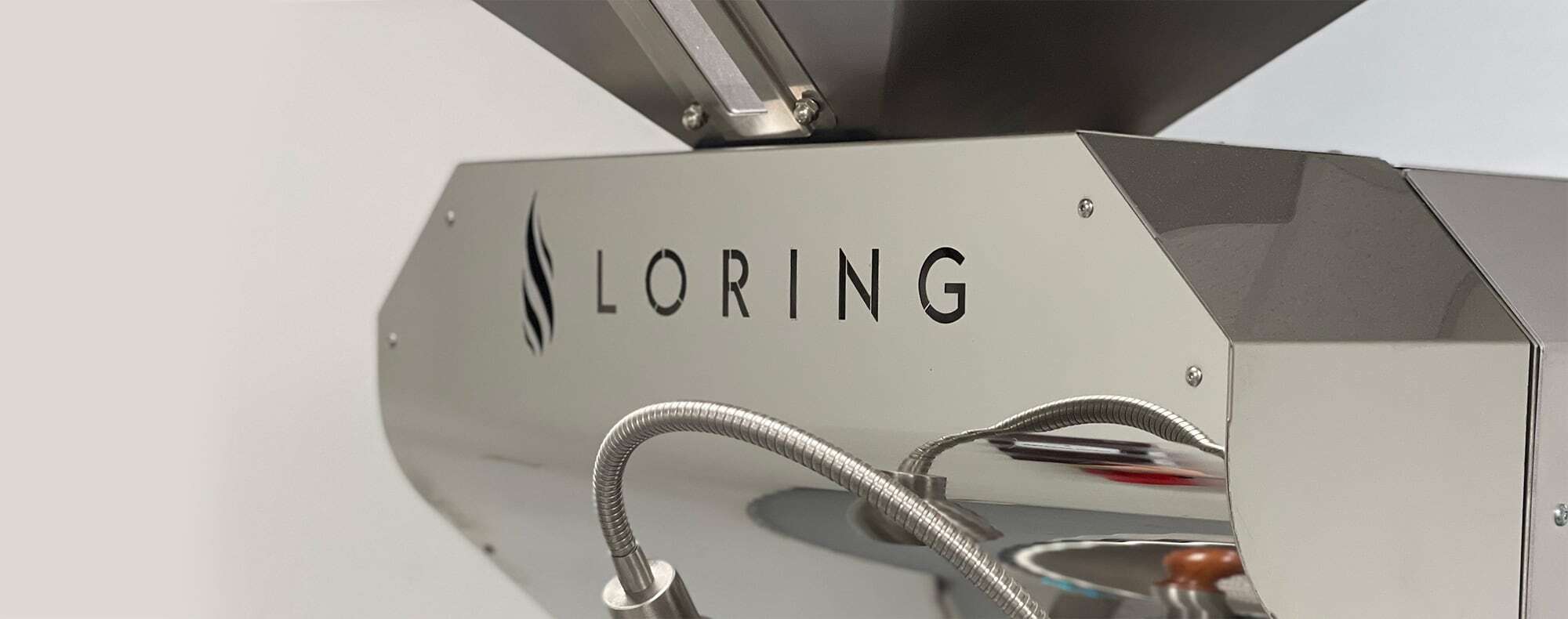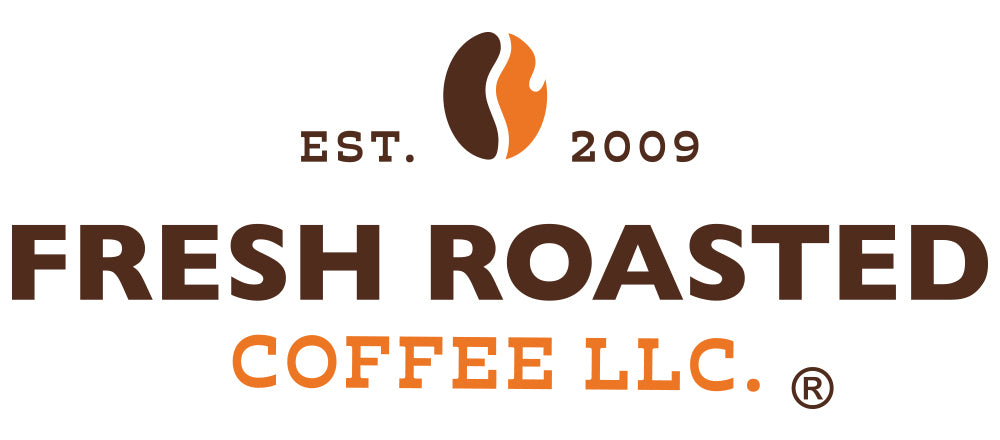Roasting with Loring Smart Roasters

How many coffee companies do you know of that use the most eco-friendly and efficient roasters in existence? Okay, now how many of those companies have five of those roasters? Fresh Roasted Coffee's production floor is home to a formidable fleet of Loring™ Smart Roasters—three Peregrines, one Kestrel, one Nighthawk. Five Lorings doesn't just mean we can roast a lot of coffee; it also means we can do a lot of good for the Earth.
Why do you only roast on Lorings?
First, we must understand that coffee roasting is not an environmentally friendly process. Traditional roasters emit harmful smoke and pollutants. These include nitrogen oxide, carbon mono- and dioxide, and “volatile organic compounds,” says Dennis Vogel, Loring's Director of Marketing and Sales, “unless a filtering system or external afterburner is used.” Traditional afterburners, however, also require fuel.
Loring foregoes an external afterburner by utilizing a singular burner to both roast the coffee and eliminate the consequent smoke. This makes for a virtually smoke-free roasting environment, which has helped us reduce our carbon emissions by 80% and save hundreds of thousands of pounds of CO2 from entering the atmosphere. Loring roasters also benefit from a closed-loop system, meaning the process is almost entirely automatic and self-regulating. This translates to more Fresh Roasted Coffee for you and less Bad Burned Coffee that goes to waste.
Another upside to the closed-loop system is recirculation. Instead of constantly reheating the ambient air in the roaster, Lorings recirculate the heat, requiring less energy to reach ideal roasting temperatures. Additionally, Fresh Roasted Coffee saves on heating bills in the winter, getting by on the heat of the roasters alone, ultimately reducing our energy consumption.
Are there any other benefits to Loring roasters?
Perhaps most importantly, repeatability. Thanks to Loring's flawless automation and Cropster, which houses our expertly crafted roast profiles, your favorite coffee is roasted the same way each time. When your life feels like it's in constant flux, know that you can always count on the cup you love.
Now that you've got a pretty good idea of a Loring's big picture, let's go deeper. We caught up with Todd K. to walk us through an entire roast. Let's make some Kenya AA happen.
What is roasting like?
For this batch (like we do for all batches of Kenya AA), we started in what Todd lovingly calls, “Green Country,” which is where we keep all our green coffee. We have almost the entire world of coffee resting in two rows near our Loring roasters—more green beans than a grocery store, one could say. After scooping around 140 lbs. of unroasted Kenya AA into the cart, Todd led us to a S7 Peregrine to get started.
As a fresh roast of Italian Roast cools down in the cooling tray, Todd attaches the green vacuum, which moves the Kenyan beans from the cart into the roaster's top hopper. From there, they'll drop into the roaster drum and begin their maiden voyage. As that's happening, Todd selects the roast profile from Cropster. This bean transfer, however, isn't without its magic. This comes in the form of a magnetic grate the catches stray rocks and debris before they make it into the roaster. “Anything that's not caught by the magnet is caught by the destoner,” says Todd.
You might be wondering why the coffee has rocks in it. It's because most coffee is dried on the ground. That's why we have two means of removing natural debris from the coffee. After the coffee drops into the roaster, “the rest of the process will be automatic,” says Todd. This ensures consistency and repeatability. The coffee is then rapidly cooled, vacuumed into the destoner, and then transferred to the bagging machine, where it is nitrogen flushed and sealed tight.
We are thrilled to be able to roast all our coffee in Loring Smart Roasters. It's just one more way we're Doing Coffee a World of Good®.

Leave a comment